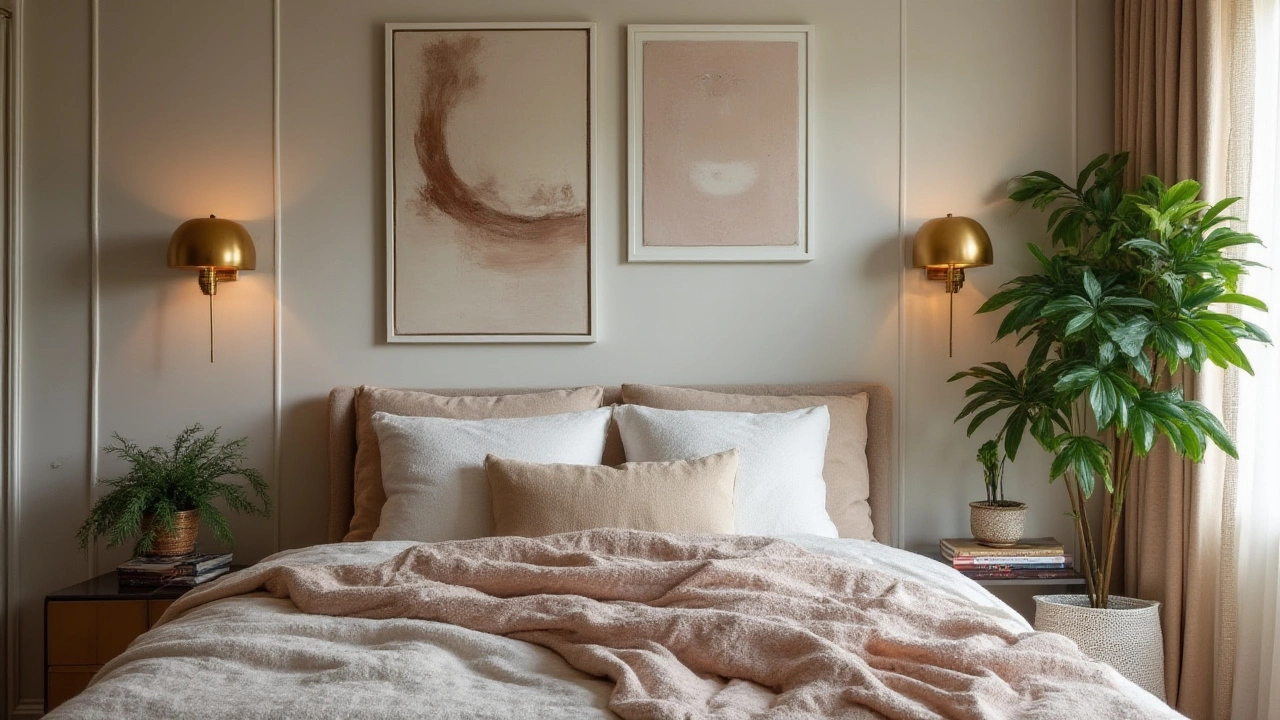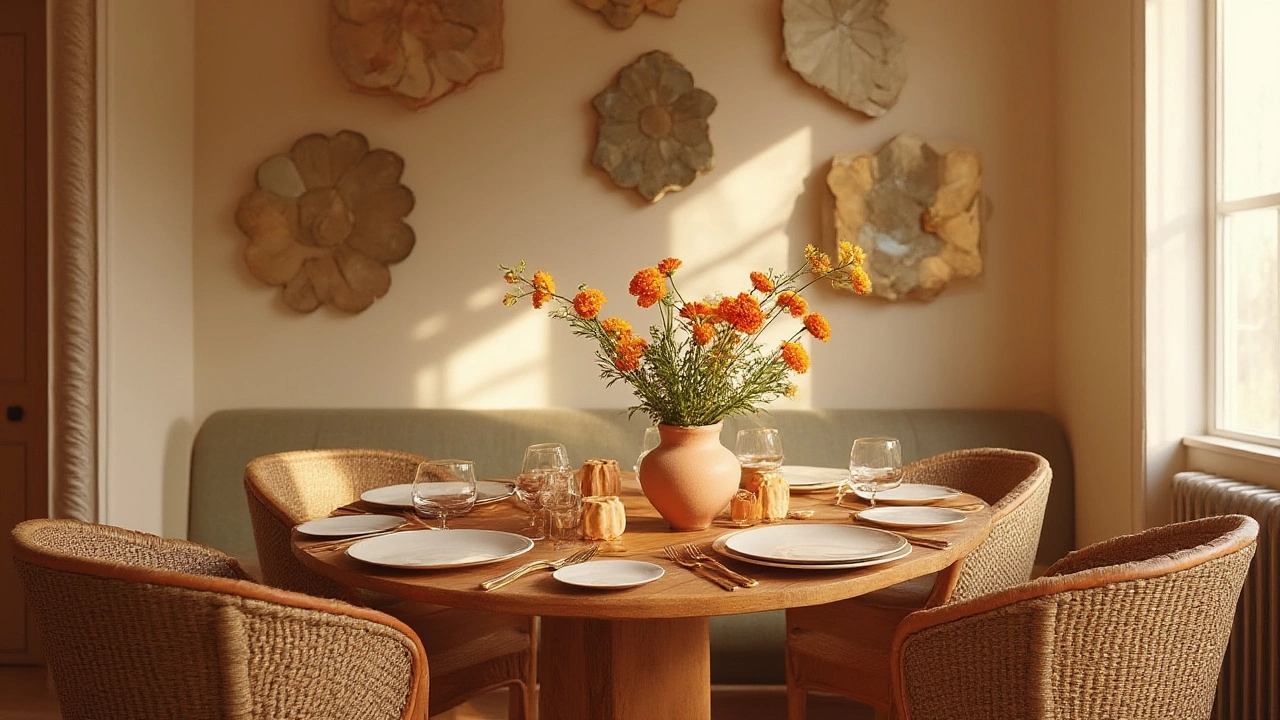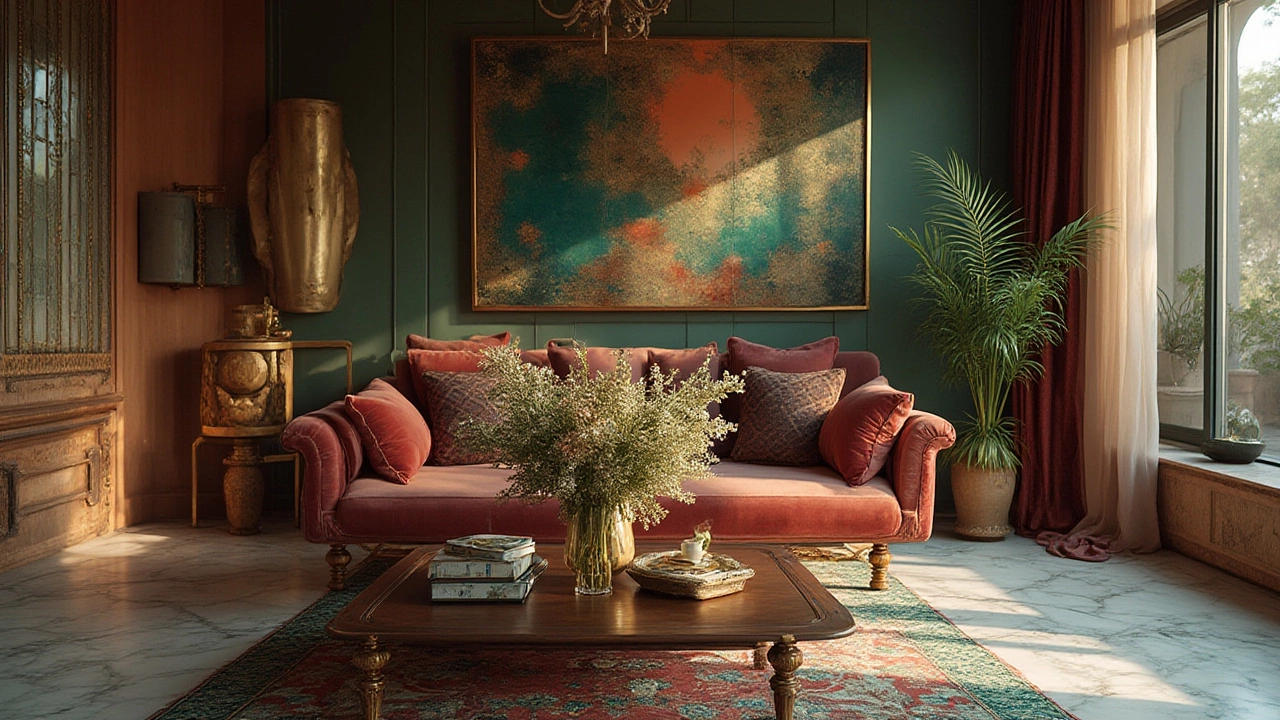If you’ve ever wandered into a friend’s home and felt an instant twinge of envy—maybe it’s the marble kitchen counters, the velvet sofa, or just some kind of unnameable “rich vibe”—you’re not alone. The truth? You don’t need to inherit a family fortune to upgrade your digs. Even if you can’t shell out for solid gold faucets or real Versace plates, there are legit ways to make your house look bougie, and people will wonder if you’re secretly rolling in cash. I’ve tested these tricks myself (let’s just say Fiona was very into the budget spreadsheet), and they really do make a difference. Most are more about style and smart choices than blowing your savings. Ready to step into the world of subtler luxury? Spoiler: It’s all in the details.
Design Basics That Instantly Scream Bougie
The good news is, you don’t need to knock down walls or move out to get that upscale look. Bougie style is less about price tags and more about how you put things together. For starters, color plays a huge role. High-end spaces often stick to a less-is-more palette—think creams, soft grays, deep navy, or forest green—instead of wild, mismatched brights. It’s all about keeping things calm and cohesive, so try painting your walls in just one or two complementary tones. You’ll be shocked how much more put-together your rooms feel. Next up: lighting. Swapping out basic light fixtures for something with a bit of personality—like a gold arc floor lamp or a modern chandelier—makes a major difference. Don’t be afraid to shop second-hand for these; a single splashy vintage light can outshine a whole room full of generic stuff. And don’t forget dimmers—plenty of luxury homes use them, not just for mood but because adjustable lighting feels special.
Treat your windows like royalty. Bougie homes don’t do naked windows. Even if you’re on a budget, hanging curtains high (well above the top of the window frame) and letting them graze the floor gives the illusion of giant windows and taller ceilings. Go for heavy fabrics like velvet, linen, or blackout cotton (yes, you can find knockoff velvet on Amazon that doesn’t break the bank). If curtains aren’t your style, try bamboo or wooden shades—they always look more expensive than plastic blinds. Furniture layout matters too. Don’t shove everything against the walls. Interior designers do this trick called “floating” furniture. Place your sofa or chairs a few inches—or even feet—off the walls, with a rug anchoring the space. Magically, the room feels bigger and more expensive. And yes, sized-up rugs matter. Most people get rugs that are way too small. Choose one so that at least the front legs of every chair and sofa sit on it—pro move right there.
Speaking of furniture, mix up your styles to avoid a showroom vibe. Add a vintage chair or an antique table to your otherwise modern setup. One old-meets-new moment makes you look like a secret collector. Same goes for hardware. Swapping basic cabinet pulls in kitchens and baths for brass or matte black versions (which you can get at big box stores—no need for custom) instantly upgrades a whole space. Pro tip: Don’t neglect the doors. Replacing plain doorknobs with something sleeker or more ornate quietly says, “I care about the details.”
Think about built-ins, even if you live in a rental. Built-in bookcases and wall-to-wall shelving look rich, but a clever IKEA hack or a few floating shelves neatly styled can create a similar vibe. Stack books, a few refined objects (like a marble bowl or metallic box), and even thrifted art. Speaking of art—oversize pieces always look pricier than dozens of little prints. One big canvas, even if you DIY it, carries way more visual weight than a gallery wall of tiny frames. And portfolio stat: 61% of interior design professionals in 2024 said that mixing large-format art with neutral paint was their top hack for budget luxury (see the table below for more numbers).
| Upgrade | Expert Impact Score | Average Cost |
|---|---|---|
| Lighting Fixtures | 8.9/10 | $60-$300 |
| Window Treatments | 8.3/10 | $40-$250 |
| Large Art | 8.7/10 | $35-$450 |
| New Hardware | 7.8/10 | $30-$200 |
| Area Rugs | 8.8/10 | $70-$1,200 |
All these tweaks pull double-duty: They make your house look richer, and you’ll love coming home to it. If you’re feeling lost, browse photos of actual homes from luxury listing sites—notice how much rests on color flow, lighting, and the way things are arranged, not just the stuff itself.

Layer Like a Stylist: Bougie Tricks with Textures and Accents
Here’s the real secret of every “how are they affording this?” house you’ve admired: Style happens in layers. If everything’s flat and one-note, your place reads economical, even if you splurged. Adding layers—especially with textiles and accents—shifts the vibe immediately. Start by throwing a chunky knit or velvet pillow on the couch. Drape a cashmere (or cashmere-look) throw over an accent chair. Stack a sheepskin or soft rug over a bigger area rug to create a plush zone. It’s all about touch: The more a room begs you to sit or run your hand over something, the ritzier it feels. And mix up the finishes; don’t get all matchy-matchy. Pair glass with metal, or mix a marble tray with a wooden bowl. The tension between different materials makes the whole scene more interesting.
Don’t forget scent—seriously. You know that gorgeous, boutique-hotel fragrance? Invest in a good diffuser or candle with a complex scent (no “clean linen” or “fresh laundry” here). Smell is the most emotional sense, and your home will feel way more luxurious with a sophisticated aroma. Fun fact: In 2024, scent marketing grew by 13% as more people tried to “design” their own spaces at home. Fiona still teases me about my herbal oud obsession, but there’s a reason fragrance makes spaces stick in a guest’s memory.
Counter clutter is the enemy of bougie style. High-end homes always seem to have acres of empty surfaces, but most real people have keys, mail, chargers, and five pairs of sunglasses piling up everywhere. Solution: Get trays. Put one on your coffee table for remotes and candles, one in your entry for keys and loose change, and another by the bed. Suddenly, clutter reads as “intentional styling.” Same goes for kitchen counters—display only a few nice things, like a marble cutting board, wooden utensils in a ceramic jar, and a bowl of (fake, realistic) lemons. Hide the rest. If you’re not using it every day, it doesn’t get prime counter real estate.
Greenery is a universal upgrade. Not plastic ferns—try a dramatic potted fiddle-leaf fig, a snake plant, or even a bundle of fresh eucalyptus in a vase. Faux plants have come a long way, too; if you’ve got a dark spot, get the best-quality fake you can find (IKEA and Target both do solid versions). One big plant looks purposeful, while lots of tiny ones gets “dorm room” fast. Add a small stack of design books on tables for an instant shot of polish—even thrift store castoffs work if the covers are pretty. And never underestimate the power of a mirror. Hang one across from a window to double the light and make your rooms look twice as big. In 2023, a survey from Home Decor Trends Weekly found that 72% of homes featured in luxury magazines used mirrors as strategic space enhancers.
Bougie homes always have something a little unexpected. Maybe it’s a leopard-print stool tucked near the vanity, or a neon sign in an otherwise serious living room. Curate your own little moment of surprise. It says you know the rules—and you’re confident enough to break them for fun. That’s a flex even the rich can’t fake.

The Life-Changing Small Stuff: Details for a Bougie Finish
Sometimes you spot a home and can’t quite figure out why it seems so fancy. It’s rarely about square footage or wild architecture. Here’s the real tip: It always comes down to details, the kind of stuff most people overlook—those secret touches bring legit *wow* factor. Start with hardware upgrades: swap builder-grade outlet covers and light switch plates for upgraded metal or even wood ones. You’d be surprised how much they stand out. Bathrooms benefit hugely from swapping out plastic shower curtain rings for heavy metal ones and adding fluffy white towels, rolled hotel-style.
Speaking of the bathroom, get yourself a sleek soap dispenser (ditch the drugstore bottle), and hang your towels with matching hooks or racks. A bamboo bath mat or thick plush rug screams spa. Even the toilet brush—hide it in a clever holder that fits the aesthetic. Real talk: Small changes here set your home apart from the average apartment, and guests notice.
Next up, storage. Bougie homes almost always have some kind of concealed storage. Wicker baskets, lidded bins, or velvet boxes hide anything you don’t want on display. Under-bed boxes work wonders for things you use less frequently. Unifying mismatched hooks, hangers, or containers in open spaces makes closets, laundry rooms, and mudrooms look sharp.
Table settings matter, even for takeout. Pull out some cloth napkins and a sleek tray or charger plate—even if the food is pizza, the vibe reads “curated.” It’s about ritual, not formality. Unique glassware (think colored tumblers or gold-rimmed coups) adds a hint of celebration to weeknights. According to a 2024 consumer survey by Modern Living Group, 58% of people said glassware was the single easiest way to make their table look more expensive.
The little everyday upgrades add up. Fresh flowers (even $5 supermarket stems) in a simple vase boost any room. Use matching hangers in your closet—plastic in one color is ten times better than a wild mix. Replace cheap plastic trash bins with metal or woven alternatives. And if you ever use open shelves, arrange your stuff by color or height. Looks like you hired a pro.
Want a bougie kitchen? Organize dry ingredients into glass jars and display the prettiest spices up front. Just watch a few pantry organization videos on YouTube—those folks know how to level up even a tiny rental kitchen. If you’ve got the cash and love coffee, go for an espresso machine or an electric milk frother, then stage it with mugs and sugar cubes on a tray. Pro baristas know this is an instant upgrade.
And remember: nothing is more bougie than confidence. Personalize your space with at least one thing that means something to you—a family photo in a nice frame, a quirky piece of art you found with friends, or even just a funny doormat. The most expensive homes in the world still reflect the lives of their owners, not just their bank account. So take these tricks and make them yours. There’s no rulebook, just your own version of fabulous.

